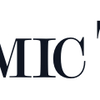- Today is:
ET NEWS
ICC Women's WC prize money more than men's WC
Niva Bupa halts cashless care at Max Hosp. pan-India
Why Indians opt for finances over physical assets?
SC extends status quo in Sambhal mosque dispute
S, C, O — 3 letters from PM Modi that pack a punch
SCO: Modi signals Trump, warns Pak, cues China
Bihar SIR: EC allows claims after Sep 1
How Agra's famous petha may lose its 'sweetness'
Vedanta awards employee stock options worth ₹450 cr
What MS & other brokerages said after Reliance AGM
Online Gaming Act to be notified soon: IT secy
Why Modi’s chat with Qi not Xi may matter more
Supreme Court rejects plea against E20 petrol policy
Rupee slides to all-time low on surge in hedging, speculative bets
The Indian rupee dropped to a record low against the U.S. dollar on Monday, reflecting mounting concerns over the higher U.S. tariffs on Indian goods and the broader economic implications for the South Asian country.The rupee declined to 88.33 to the U.S. dollar, dipping past the 88.3075 lifetime low hit in the previous session. The Reserve Bank of India stepped in on Friday to support the rupee, yet letting it breach 88 caught most market participants off guard."Unless we see some improvement in trade relations between India and the U.S., we cannot expect any stability in the rupee, and we could see test of fresh lows frequently," said VRC Reddy, treasury head at Karur Vysya Bank."Everything now depends upon the RBI, on how they plan to manage the markets," Reddy said.The RBI has a track record of stepping in to curb excessive rupee volatility, particularly during periods of heightened uncertainty or rampant speculative activity.While the RBI has repeatedly emphasized that it does not target a specific exchange rate, its actions are closely monitored and can significantly influence short-term rupee dynamics.HEFTY US TARIFFSThe U.S. last week raised tariffs on Indian products by 25%, bringing the country’s total duty burden to 50%.Higher tariffs are expected to dent India's export competitiveness, particularly in sectors such as textiles and engineering goods. A slowdown in exports could weigh on corporate revenues and profits, potentially affecting hiring and investment decisions.With the tariffs increasing uncertainty over corporate earnings and India's broader growth outlook, foreign portfolio investors may reconsider allocations to Indian equities.Over the past three sessions, foreign investors pulled $2.4 billion from Indian equities.With exports expected to slow, the trade deficit is likely to widen, putting pressure on the current account. The country may have to rely more on capital inflows, which have already been weak and could remain under pressure amid the uncertain backdrop.
22k gold prices at Tanishq & other stores
Small shop owner gets tax notice of Rs 141 cr
NSE’s first Tuesday expiry marks a historic move
Ola Electric shares rally 30% in 5 days. Should you buy, sell or hold?
Shares of Ola Electric Mobility surged as much as 13% on Monday to Rs 61.14 on the BSE, extending a rally that has lifted the stock 29.6% over the past five sessions. The gains follow the company’s receipt of Production Linked Incentive certification for its Gen 3 scooters, a milestone management says will improve margins and accelerate its path to profitability.The Automotive Research Association of India approved Ola under the Ministry of Heavy Industries’ scheme, making the company eligible for incentives ranging from 13% to 18% of sales value until 2028. The certification applies to all seven models of Ola’s Gen 3 S1 scooters, which together account for more than half of its current sales volume.“Securing PLI certification for our Gen 3 scooters, which form the bulk of our sales, is a critical step towards profitability. This will directly strengthen our cost structure and margins, enabling us to deliver sustainable growth,” a company spokesperson said.With both its Gen 2 and Gen 3 lineups now certified, Ola expects the approval to substantially boost profitability starting from the second quarter of FY26. The company said the incentive will help move it closer to achieving EBITDA positivity.Gold surpasses U.S. Treasuries in central banks’ reserves for first time since 1996Analysts weigh inMandar Bhojane, senior technical and derivative analyst at Choice Broking, said Ola Electric “has confirmed a breakout and retest of its falling channel and... The price structure is constructive with a series of higher highs and higher lows, supported by strong volumes.” Bhojane noted that “dips towards Rs 52–50 should be considered healthy corrections and potential buying zones,” while a move above Rs 57 could open the way to Rs 62 and Rs 70.Drumil Vithlani, technical research analyst at Bonanza, pointed to resistance at Rs 55–58 and support at Rs 50. “The RSI near 68 suggests the stock is approaching overbought territory, raising the possibility of a short-term pullback or sideways consolidation before attempting another leg higher,” Vithlani said.Anirudh Garg, partner and fund manager at INVasset PMS, said Ola has “broken out of a year-long downtrend with strong volumes, marking an important technical shift.” Garg identified support at Rs 50–52 and resistance at Rs 58–62, with potential upside to Rs 68–70 if the stock closes decisively above that zone. “The 22% weekly gain (as much as) has shifted sentiment sharply, but the RSI hovering close to 70 highlights short-term caution,” Garg said.Financial healthDespite the market rally, Ola’s fundamentals remain under pressure. The company reported a net loss of Rs 428 crore in the June quarter, wider than a year earlier, though narrower sequentially. Revenue halved year-on-year to Rs 828 crore, while gross margin improved to 25.6%.At its first annual general meeting last week, Ola secured shareholder approval to reallocate IPO proceeds and extend deployment timelines, citing capital discipline and risk management. Garg called the PLI certification a “structural milestone” but warned that “execution and market share retention” remain critical.Industry challenges and growth betsThe EV sector continues to face rare earth supply constraints after China tightened export curbs earlier this year. Ola said it has accelerated the development of motors without rare earth magnets. Analysts expect supply chain bottlenecks to ease in the coming months, which could restore balance in the market.The company is also betting on new models such as the S1 Pro Sport, S1 Pro+ 5.2 kWh, and Roadster X+ 9.1 kWh, announced at its Sankalp event, with deliveries scheduled later this year and into early 2026.Stock performanceOla shares remain nearly 43% lower in 2025 and continue to trade below their Rs 76 IPO issue price. The stock is above all its short-term and medium-term simple moving averages, though it remains below its 200-day SMA.What record-breaking Jio IPO means for 44 lakh Reliance Industries shareholders(Disclaimer: Recommendations, suggestions, views and opinions given by the experts are their own. These do not represent the views of The Economic Times)
Modi-Putin bilateral talks: Modi speaks of strong ties
Pagination

The Economic Times: Breaking news, views, reviews, cricket from across India
Subscribe to ET NEWS feed











Recent comments